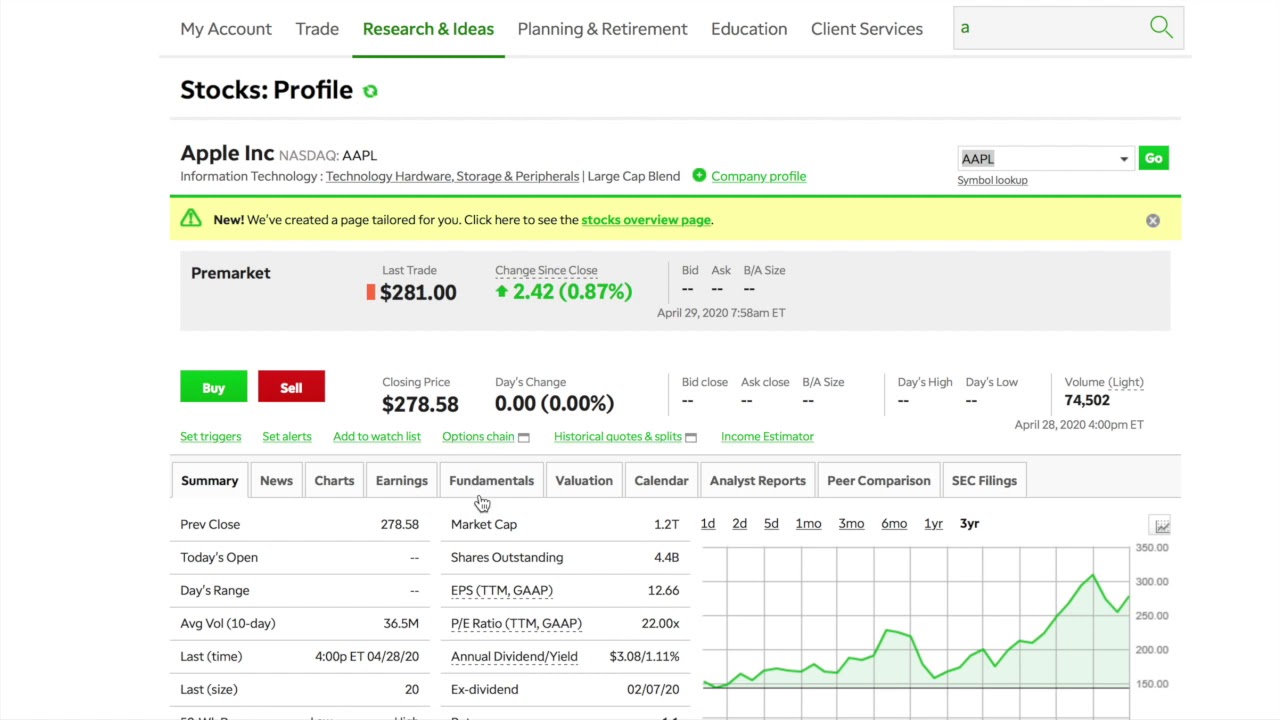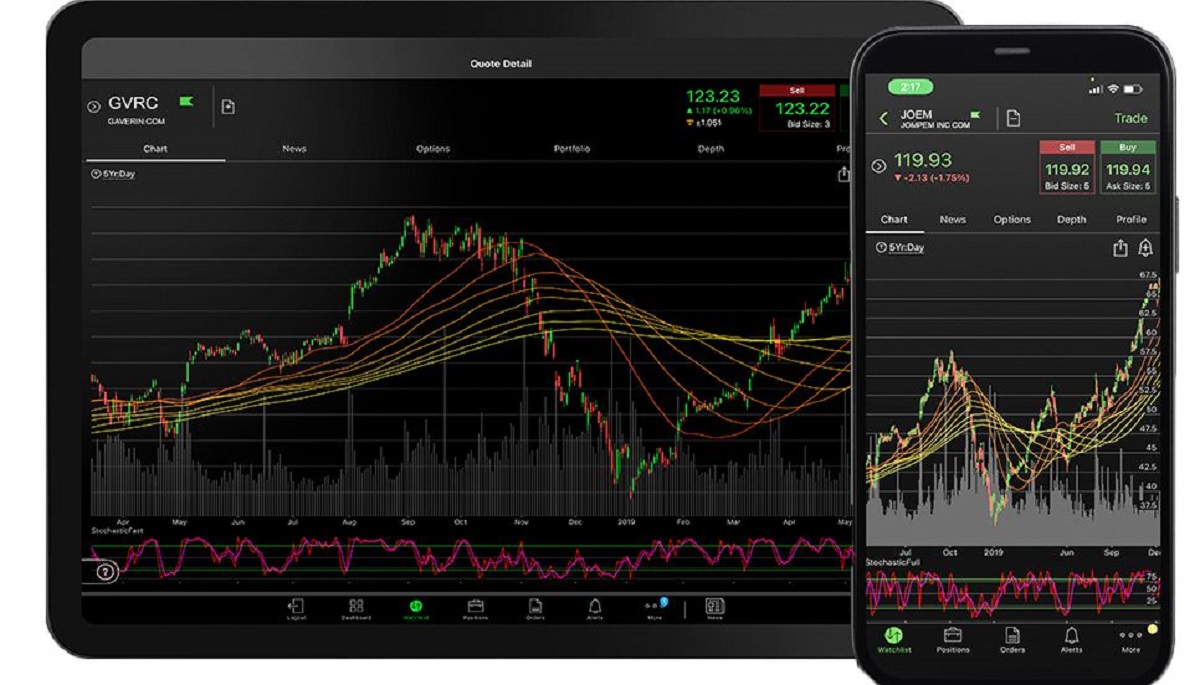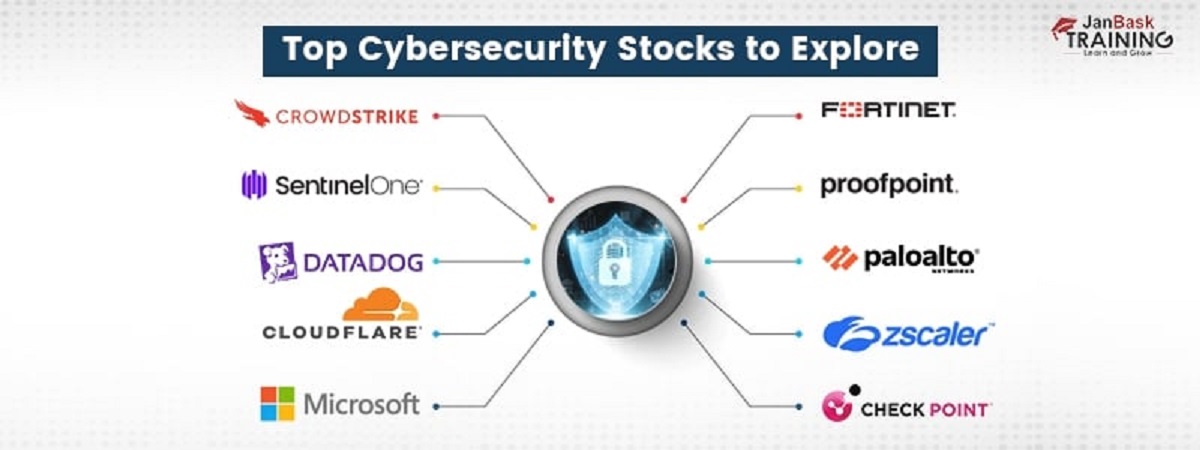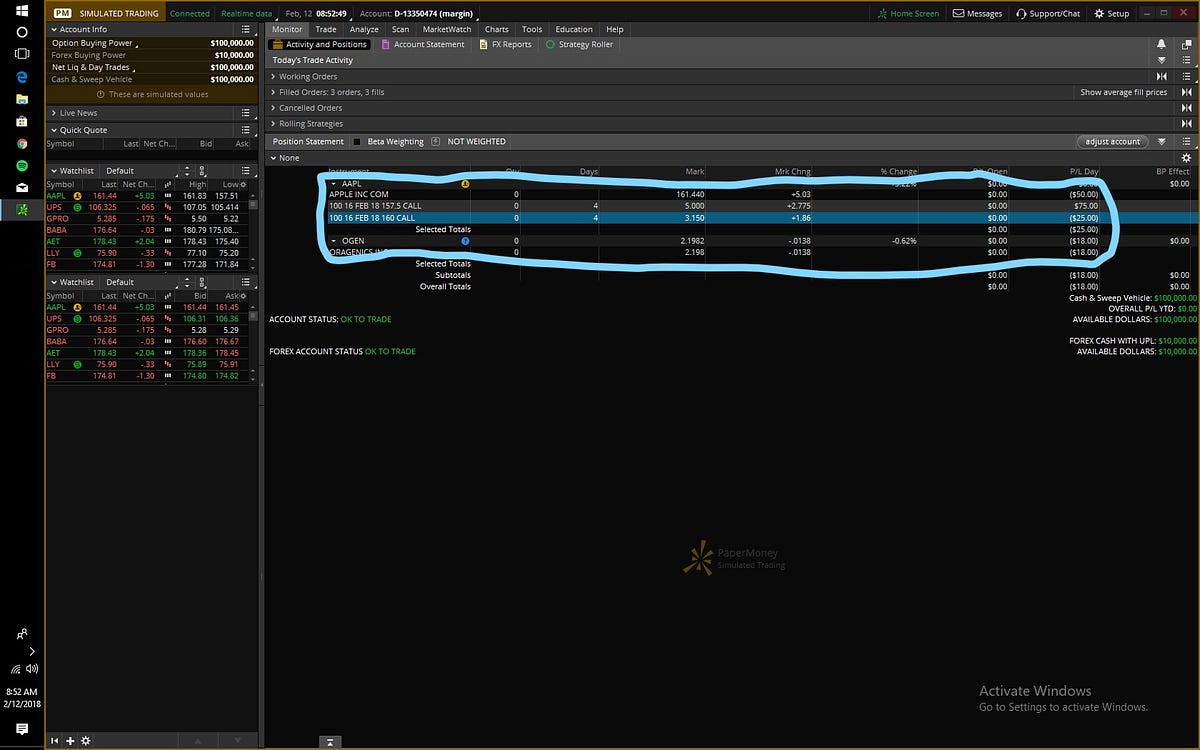Overview of Options Trading
Options trading is a financial instrument that allows investors to buy and sell contracts that grant the right to buy or sell an underlying asset, such as stocks, at a predetermined price within a specific time period. It offers traders the potential for significant returns and the flexibility to implement various trading strategies.
Options trading is different from traditional stock trading, as it allows traders to profit from both rising and falling markets. When trading options, investors can take advantage of price movements in the underlying asset without having to own the asset itself.
One of the key concepts in options trading is the option contract, which represents the agreement between the buyer and seller. There are two types of options: call options, which give the buyer the right to buy the underlying asset, and put options, which give the buyer the right to sell the underlying asset.
Options trading can provide several advantages to traders. Firstly, it offers leverage, allowing traders to control a larger position with a smaller amount of capital. This can lead to amplified returns if the trade is successful. Secondly, options provide flexibility, as they can be used for speculation, hedging existing positions, or generating income through covered call writing.
However, options trading also carries inherent risks. It is important for traders to have a thorough understanding of the market and the risks involved before engaging in options trading. Factors such as market volatility, time decay, and liquidity can influence the profitability of options trades.
Before starting options trading, it is crucial to assess your risk tolerance and financial goals. It is advisable to start with a small amount of capital and gradually increase your position as you gain experience and confidence in your trading strategies.
Overall, options trading offers a unique opportunity for investors to profit from market movements and diversify their investment portfolio. With careful planning, education, and risk management, traders can potentially achieve success in the options market.
Understanding the Requirements for Options Trading
Before diving into options trading, it is important to understand the requirements and eligibility criteria set by brokers. This ensures that you meet the necessary qualifications and can navigate the options market with confidence.
One of the primary requirements for options trading is having a brokerage account with a reputable broker. TD Ameritrade, for example, is a popular choice for options trading due to its comprehensive platform and educational resources.
Next, you need to meet certain financial requirements. Typically, brokers require traders to have a certain amount of capital in their account to engage in options trading. The specific financial requirements may vary depending on the broker and the trading strategy you plan to pursue.
Another important consideration is your knowledge and experience in options trading. Options trading involves complex concepts and strategies, so having a solid understanding of how options work is crucial. Most brokers, including TD Ameritrade, expect traders to have a basic level of options knowledge before granting permission to trade options.
Brokers often provide educational materials, webinars, and seminars to help traders enhance their understanding of options. It is advisable to take advantage of these resources to expand your knowledge and familiarize yourself with different options trading strategies.
In addition to the educational aspect, brokers may also assess your trading experience. They may require you to demonstrate a certain level of trading experience, which can be proven through your trading history or previous investment activities.
Lastly, brokers may require you to complete an options trading agreement or application. This typically involves acknowledging the risks associated with options trading and agreeing to abide by the rules and regulations set by the broker and regulatory bodies.
It is important to carefully read and understand the terms and conditions of the options trading agreement before signing or submitting the application. This ensures that you are aware of the rights and responsibilities involved in options trading.
By understanding the requirements and eligibility criteria for options trading, you can better prepare yourself to meet the necessary qualifications and pursue options trading with confidence. Take the time to assess your financial situation, educational background, and trading experience before embarking on your options trading journey.
Opening a TD Ameritrade Account
Opening a TD Ameritrade account is the first step towards engaging in options trading. TD Ameritrade is a well-established brokerage firm that offers a user-friendly platform and a wide range of investment options, including options trading.
To open an account with TD Ameritrade, you will need to visit their website or contact their customer service. The account opening process is typically straightforward and can be completed online.
During the account opening process, you will be required to provide personal information such as your name, address, social security number, and employment details. This information is necessary for identity verification and compliance with regulatory requirements.
TD Ameritrade may also ask you to provide financial information, including details about your income, net worth, and investment objectives. This information helps assess your suitability for options trading and allows TD Ameritrade to provide personalized investment guidance.
Once you have submitted your application, TD Ameritrade will review it and conduct the necessary background checks. This process may take a few business days, so it is important to be patient.
While waiting for your account to be approved, you can take advantage of TD Ameritrade’s educational resources to enhance your options trading knowledge. They offer a wide range of educational materials, including articles, videos, and webinars, to help you understand the basics of options trading and develop trading strategies.
After your account is approved, you can fund your TD Ameritrade account. TD Ameritrade offers multiple funding options, including bank transfers, wire transfers, and electronic funding from other financial institutions.
It is important to note that different funding methods may have different processing times and associated fees. Make sure to review the terms and conditions provided by TD Ameritrade and choose the funding method that suits your needs.
Once your account is funded, you can access the TD Ameritrade trading platform and start exploring the options trading features. The platform provides real-time market data, analysis tools, and a variety of order types to execute your options trades efficiently.
In summary, opening a TD Ameritrade account is a relatively straightforward process. By providing the necessary personal and financial information, you can begin your options trading journey with a reputable and trusted brokerage firm like TD Ameritrade.
Completing the Options Trading Application
Completing the options trading application is an essential step in gaining approval to trade options with TD Ameritrade. This application is designed to assess your eligibility and understanding of options trading, and it plays a significant role in determining whether you will be granted permission to engage in options trading.
The options trading application typically consists of several sections that require you to provide detailed information about your investment objectives, financial situation, and options trading experience. It is crucial to take the time to carefully complete each section and provide accurate and truthful information.
When completing the options trading application, you will need to provide details about your trading experience, including the type of investments you have traded previously and the level of experience you have with options specifically. It is important to accurately represent your level of options trading knowledge and experience to ensure the suitability of the trading level that will be assigned to your account.
In addition to your trading experience, the application will also ask you about your financial situation. This includes providing information about your income, net worth, and investment objectives. These details help TD Ameritrade assess your risk tolerance and ensure that the options trading strategies you plan to pursue are aligned with your financial goals.
The options trading application may also require you to acknowledge and understand certain risks associated with options trading. It is important to carefully read through the risks and ensure that you have a comprehensive understanding of the potential risks involved in options trading.
As part of the application, you may also be required to provide your understanding of options trading strategies and the terminology associated with options. This demonstrates your knowledge and proficiency in options trading concepts.
Once you have completed the options trading application, review it thoroughly to ensure that all information provided is accurate and complete. Any missing or incorrect information may delay the approval process or result in an incomplete application.
After reviewing the application, you can submit it to TD Ameritrade for review. The processing time for the application may vary, but you will typically receive a response within a few business days.
If your options trading application is approved, you will be granted trading privileges based on the level of options trading experience and knowledge demonstrated in the application. This may include the ability to trade basic options strategies initially, with the potential to unlock more advanced strategies as your experience and knowledge grow.
In summary, completing the options trading application is a crucial step in gaining approval to trade options with TD Ameritrade. By providing accurate and detailed information about your trading experience, financial situation, and understanding of options trading, you can increase your chances of obtaining permission to engage in options trading.
Financial Information and Eligibility Requirements
When it comes to options trading, brokers like TD Ameritrade have certain financial information and eligibility requirements in place. These requirements aim to ensure that traders have the necessary financial resources and understanding to engage in options trading.
One aspect of the financial information requirement is the need for traders to have a certain amount of capital in their account. The specific amount may vary depending on the broker and the trading strategy you plan to pursue. This requirement helps to ensure that traders have sufficient funds to cover the potential risks and margin requirements associated with options trading.
Eligibility requirements may also include minimum income or net worth thresholds set by the broker. These thresholds serve as a means to assess a trader’s financial capacity to absorb any potential losses that may arise from options trading. By having these requirements, brokers aim to ensure that traders have adequate financial stability and can handle the risks involved in options trading.
When considering eligibility, brokers like TD Ameritrade may also take into account an individual’s investment objectives. This involves understanding the goals and timeframes that traders have for their investments and aligning them with suitable options trading strategies. By evaluating investment objectives, brokers can help ensure that traders are engaging in options trading with appropriate goals in mind.
As part of the eligibility process, brokers may evaluate a trader’s risk tolerance. This helps assess the level of risk a trader is comfortable with and ensures that options trading strategies selected are suitable for their risk tolerance level. The evaluation of risk tolerance is essential to protect traders from taking on excessive risks that they may not be financially or emotionally prepared to handle.
It is important for traders to be honest and transparent when providing their financial information. Misrepresenting financial details or failing to meet the eligibility requirements can result in potential account restrictions or the denial of options trading privileges.
Traders should also be aware that brokers have a responsibility to ensure compliance with regulatory bodies. Therefore, brokers may require additional documentation or information to meet regulatory requirements.
Understanding the financial information and eligibility requirements is crucial before engaging in options trading. By meeting these requirements, traders can ensure that they have the necessary financial resources and understanding of the risks involved to engage in options trading successfully.
Knowledge and Experience in Options Trading
Having the necessary knowledge and experience in options trading is vital for success in the options market. Brokers, like TD Ameritrade, often require traders to have a certain level of understanding and experience before granting permission to trade options.
Options trading involves complex concepts and strategies, so it is crucial to have a solid understanding of how options work. Traders should grasp fundamental concepts such as call options, put options, strike price, expiration date, and the relationship between the options and the underlying asset. This knowledge forms the foundation for executing options trades effectively.
Before engaging in options trading, it is advisable to educate yourself through various resources and educational materials. TD Ameritrade, for example, offers a range of educational materials, including articles, videos, and webinars, to help traders enhance their options trading knowledge.
In addition to theoretical knowledge, having practical experience in options trading is crucial. Traders can gain experience by starting with paper trading or virtual trading accounts, which simulate real market conditions without risking actual capital. These simulated trading platforms help traders practice implementing options strategies and gain confidence in their decision-making.
Traders may also consider seeking mentorship or guidance from experienced options traders. Learning from seasoned professionals can provide valuable insights, strategies, and practical tips that can shorten the learning curve and improve decision-making skills.
Brokers like TD Ameritrade may evaluate a trader’s knowledge and experience in options trading before granting trading permissions. This assessment helps determine the appropriate options trading level or tier assigned to the trader’s account.
Traders with limited options trading knowledge or experience may be granted lower-level trading permissions initially. As traders gain more knowledge and experience, they can progress to higher levels, allowing them to engage in more advanced options strategies like spreads, straddles, or iron condors.
It is important to note that options trading involves risks, and traders should never engage in trading strategies they do not fully understand. Continuing education and staying updated with market trends and changes in options trading regulations and strategies are vital to consistently improve your knowledge and expertise.
By acquiring the necessary knowledge and experience in options trading, traders can make informed decisions, effectively manage risks, and maximize their potential for success in the options market.
Completing the Options Trading Agreement
Completing the options trading agreement is a crucial step in gaining permission to engage in options trading with brokers like TD Ameritrade. The options trading agreement is a legal document that outlines the terms and conditions, rights, and responsibilities associated with options trading.
When completing the options trading agreement, it is important to carefully read through the document to ensure a clear understanding of the obligations and requirements outlined. While the specifics of the agreement may vary between brokers, there are a few common elements that traders should be aware of.
One important aspect of the options trading agreement is the acknowledgment of the risks associated with options trading. Options trading involves potential losses and is not suitable for all investors. By signing the agreement, traders acknowledge that they understand the risks involved and are prepared to accept any potential losses.
The agreement may also outline the rules and regulations set by the broker and regulatory bodies. This includes restrictions on trading activities, margin requirements, and compliance with anti-money laundering laws and other regulatory obligations.
In addition to understanding the risks and regulations, traders will also be required to provide their consent to certain actions. This includes consenting to electronic delivery of account statements and trade confirmations, as well as potential assignment or exercise of options contracts.
Completion of the options trading agreement may also involve providing information about your financial situation and investment objectives. This helps brokers like TD Ameritrade ensure that the options trading strategies you plan to pursue align with your financial goals and risk tolerance.
As with any legally binding agreement, it is important to provide accurate and truthful information when completing the options trading agreement. Providing false information or misrepresenting facts can lead to consequences, including account restrictions or termination of trading privileges.
Once you have carefully reviewed the options trading agreement and understand the terms and conditions, you can sign and submit the agreement to the broker for processing. Keep a copy of the agreement for your records.
It is crucial to periodically review the options trading agreement as brokers may update the terms and conditions. Staying informed about any changes can help ensure that you remain in compliance with the agreement and any regulatory requirements.
By completing the options trading agreement, traders demonstrate their commitment to abiding by the rules and regulations set by the broker and regulatory bodies. It is an essential step in gaining permission to engage in options trading and should be done with careful consideration and understanding of the obligations involved.
Submitting the Application for Approval
After completing the options trading application and the necessary documentation, submitting the application for approval is the next step in gaining permission to trade options with brokers such as TD Ameritrade.
When submitting the application for approval, it is important to double-check that all required information is accurate and complete. Any missing or incorrect information can result in delays in the approval process or potential rejection of the application.
Brokers like TD Ameritrade typically provide multiple methods for submitting the application. This can include online submission through their website or submission of physical forms via mail or fax. Traders should choose the submission method that is convenient and aligned with the broker’s preferences.
Online submission is often the most efficient and convenient option, as it enables traders to upload electronic copies of the required documentation. It is important to ensure that the documents are clear and legible to facilitate the review process.
Once the application is submitted, brokers like TD Ameritrade will typically review it and conduct the necessary background checks. The processing time for applications may vary, but traders can generally expect to receive a response within a few business days.
During the review process, brokers may verify the information provided in the application, perform identity checks, and evaluate compliance with regulatory requirements. They may also assess the trader’s knowledge and experience in options trading before granting approval.
If any discrepancies or missing information are identified during the review, brokers may reach out to traders for clarification or additional documentation. It is important to promptly respond to any such requests and provide the requested information to avoid delays in the approval process.
Traders should note that submission of the application does not guarantee automatic approval for options trading. Brokers like TD Ameritrade have specific criteria and qualifications that need to be met before granting trading permissions.
If the application is approved, traders will typically receive notification via email or mail. The approval may include the assigned trading level, which determines the types of options strategies that can be traded. Traders may initially be assigned a lower trading level and can gradually progress to higher levels as their knowledge and experience grow.
However, in some cases, applications may be rejected if the trader does not meet the requirements or fails to provide the necessary information. In such instances, brokers may provide reasons for the rejection and may offer guidance on what steps can be taken to become eligible for options trading in the future.
In summary, submitting the application for approval is a crucial step in gaining permission to trade options. Traders should ensure that the application is completed accurately and that all required documentation is provided. Promptly responding to any requests for additional information or clarification can help expedite the approval process.
Waiting for Approval or Rejection
After submitting the options trading application, traders must patiently wait for the decision on their application from the broker, such as TD Ameritrade. This waiting period can evoke a mix of anticipation and anxiety, but it is an integral part of the process.
During this time, brokers review the application, assess the trader’s qualifications, and conduct necessary background checks. The processing time for applications can vary depending on the broker and the volume of applications they are receiving.
Traders should refrain from contacting the broker excessively during this waiting period, as it can hinder the review process and delay the final decision. Instead, it is recommended to refer to the broker’s website or the application status page for information or updates on the progress of the application.
While waiting for approval or rejection, traders can utilize this time to further their options trading education. They can explore educational resources provided by the broker, attend webinars, read books, or engage with online communities to enhance their knowledge and understanding of options trading.
It is essential to prepare mentally and emotionally for both possible outcomes. If the application is approved, traders should be ready to handle the responsibilities and obligations that come with options trading. They can begin strategizing and planning their options trades based on the trading level assigned to them.
If the application is rejected, it is crucial not to be disheartened. Rejections can happen for a variety of reasons, including insufficient knowledge or experience in options trading. Traders should not view the rejection as a permanent setback but as an opportunity for growth.
Traders should reflect on the reasons for rejection, if provided, and use them as a learning experience. This period can be used to further enhance their understanding of options trading, gain more experience, and improve their knowledge in areas where they may have fallen short initially.
Brokers may provide guidance on what steps can be taken to become eligible for options trading in the future. Traders can use this feedback to address any deficiencies and work towards meeting the necessary requirements.
Once the final decision on the application is received, brokers will typically communicate the outcome via email, letter, or through the application status page. If approved, traders can look forward to embarking on their options trading journey. If rejected, traders can use the feedback provided to make adjustments and reapply in the future.
In summary, waiting for approval or rejection of the options trading application requires patience and understanding. This waiting period should be used for self-improvement and education, regardless of the outcome. Traders should be prepared for both possible outcomes and be ready to take the necessary steps based on the decision received.
Taking the Required Education Courses
After gaining approval for options trading, traders may be required to take certain education courses mandated by the broker or recommended for enhancing their understanding of options trading. These courses are designed to provide valuable knowledge and skills that can contribute to successful options trading.
Brokers like TD Ameritrade offer a range of educational resources, including online courses, webinars, and seminars, to help traders advance their options trading knowledge. These courses cover various topics, from basic options concepts to advanced trading strategies.
Taking the required education courses is essential for several reasons. Firstly, it helps traders gain a deeper understanding of options trading and its intricacies. The courses can cover topics such as option pricing, volatility, risk management, and specific trading strategies, providing traders with a comprehensive set of tools to make informed decisions.
Secondly, education courses can help familiarize traders with the broker’s platform, trading tools, and features specific to options trading. This knowledge ensures that traders are equipped to navigate the platform efficiently, execute trades, analyze market data, and monitor their options positions effectively.
Education courses also offer the opportunity to learn from experienced professionals and industry experts. Traders can benefit from their insights, practical tips, and real-world examples that can significantly contribute to their trading success.
Traders should actively engage with the educational content, taking notes, asking questions, and seeking clarification on any concepts that are unclear. This active participation helps ensure that they fully comprehend the material and can apply it effectively in real market scenarios.
Additionally, taking the required education courses showcases a commitment to continuous learning and improvement. It demonstrates a serious approach to options trading and a dedication to refining one’s skills to adapt to changing market conditions.
The completion of required education courses may be a prerequisite for accessing certain trading levels or advanced trading strategies. Traders must fulfill these requirements to fully utilize the options trading privileges granted to them by the broker.
Furthermore, even after completing the required courses, it is beneficial for traders to continue their education on an ongoing basis. The options market is dynamic, and staying informed about new strategies, market trends, and regulatory changes is crucial for long-term success.
Overall, taking the required education courses is a critical step in a trader’s journey towards mastering options trading. It equips traders with essential knowledge, enhances their understanding of options concepts and strategies, and demonstrates a commitment to continuous learning. By investing time and effort into these courses, traders are positioning themselves for greater success in the options market.
Learning about Different Types of Options Strategies
A key aspect of becoming proficient in options trading is gaining knowledge about the various types of options strategies. Understanding these strategies empowers traders to make informed decisions and effectively navigate the options market.
Options strategies are combinations of options contracts that traders use to achieve specific objectives. Each strategy has its unique characteristics, risk-reward profiles, and suitability for different market conditions. Becoming familiar with these strategies allows traders to tailor their approach to meet their individual goals and market outlook.
One commonly used strategy is the long call, which involves purchasing a call option with the expectation that the price of the underlying asset will increase. This strategy offers unlimited profit potential while limiting the trader’s risk to the premium paid for the option.
Conversely, the long put strategy involves buying a put option, anticipating a decline in the price of the underlying asset. It provides the trader with the right to sell the asset at a predetermined price, allowing them to profit from downward price movements.
Another popular strategy is the covered call, where traders hold a long position in an asset and simultaneously sell a call option on that asset. This strategy generates income from the premium received, but it limits the upside potential of the asset.
Traders who anticipate minimal price movement in the underlying asset may consider employing the iron condor strategy. This strategy involves selling both a call spread and a put spread, with the goal of profiting from the range-bound movement of the asset’s price.
Other common strategies include the straddle, strangle, butterfly, and collar. Each of these strategies has distinct risk and reward characteristics and can be utilized in different market conditions.
Learning about these options strategies involves understanding the components of each strategy, such as the number of options contracts involved, strike prices, expiration dates, and the potential profit/loss scenarios. Traders should also evaluate the risks associated with each strategy, including the breakeven points and the impact of time decay and changes in implied volatility.
Brokers like TD Ameritrade provide educational materials, webinars, and trading platforms with options strategy functionalities to facilitate the learning process. Traders can use these resources to familiarize themselves with the intricacies of each strategy and even simulate trades to gain practical experience.
As traders gain more knowledge and experience, they can explore more advanced strategies and combinations, such as ratio spreads, condors with wings, or synthetic positions. These strategies can offer more sophisticated approaches to capitalizing on specific market conditions or hedging existing positions.
In summary, learning about different types of options strategies is crucial for options traders. It allows them to select the most suitable strategies for their objectives and market conditions. By understanding the components, risk-reward profiles, and practical application of each strategy, traders can enhance their decision-making abilities and increase their chances of success in the options market.
Practicing with Simulated Trading
Simulated trading, also known as paper trading or virtual trading, is a valuable tool for options traders to gain practical experience and refine their trading strategies without risking real capital. It allows traders to engage in simulated trades using virtual money, replicating real market conditions and providing a risk-free learning environment.
One of the key benefits of simulated trading is the ability to apply theoretical knowledge in a practical setting. Traders can familiarize themselves with the trading platform, practice executing different options strategies, and observe the outcomes of their trades in real-time without the fear of losing money.
Simulated trading platforms, offered by brokers like TD Ameritrade, provide features such as live market data, charting tools, and order entry capabilities. This allows traders to closely analyze the market, track their trades, and make informed decisions just as they would in real trading scenarios.
Through simulated trading, traders can assess the performance of different options strategies and fine-tune their approach. They can experiment with variations of entry and exit points, adjust position sizes, and explore different risk management techniques. This hands-on experience helps build confidence and develop a deeper understanding of how options strategies work.
Simulated trading also enables traders to gain insight into the impact of factors such as market volatility, time decay, and changes in implied volatility. Traders can observe how these factors affect the prices of options and the profitability of their trades, allowing them to make more informed decisions in live trading scenarios.
Moreover, simulated trading provides an opportunity to evaluate the effectiveness of different options trading strategies in various market conditions. Traders can test strategies suited for bullish, bearish, or range-bound markets, and determine which strategies align best with their risk tolerance and investment goals.
It is important for traders to approach simulated trading seriously and treat it as a learning experience. By tracking and analyzing simulated trades, traders can identify areas for improvement, recognize patterns, and refine their decision-making process.
While simulated trading offers a risk-free environment, it is important to remember that emotions and psychological factors may still come into play. Traders should strive to replicate the same level of discipline and emotional control they would exercise in real trading to gain a more accurate representation of their abilities.
Once traders have gained confidence and experience through simulated trading, they can gradually transition to live trading with real capital. However, it is advisable to start with small position sizes and continue to monitor and evaluate performance to ensure consistency and to avoid excessive risk.
In summary, simulated trading is an invaluable tool for options traders to gain practical experience, test different strategies, and refine their decision-making skills. By leveraging simulated trading platforms, traders can strengthen their knowledge, build confidence, and make more informed trading decisions in real market scenarios.
Developing a Trading Plan
Developing a trading plan is a crucial step for options traders to guide their decision-making, manage risk, and increase their chances of success in the market. A trading plan serves as a roadmap that outlines a trader’s objectives, strategies, risk management guidelines, and execution rules.
The first step in developing a trading plan is to establish clear and realistic trading goals. Traders should define what they want to achieve through options trading, whether it is generating additional income, hedging existing positions, or achieving long-term capital appreciation.
Next, traders need to identify the strategies that align with their goals and market outlook. This involves selecting options strategies based on their risk appetite, capital availability, and their level of comfort with different trading techniques.
Traders should also define the criteria for entering and exiting trades. This includes identifying potential entry signals, such as technical indicators or fundamental analysis factors, and determining under what conditions a trade will be closed to lock in profits or limit losses. These criteria help ensure discipline in decision-making and remove emotional biases.
Risk management is a crucial component of a trading plan. Traders should establish guidelines for position sizing, which determines the amount of capital allocated to each trade based on risk tolerance. Setting stop-loss levels and profit targets allows traders to manage risk and protect their capital while aiming for a desirable risk-to-reward ratio.
Additionally, traders should consider incorporating rules for adjusting or managing existing options positions. This may involve criteria for rolling options contracts to extend expiration or adjusting strike prices based on market conditions, in order to adapt to changing price movements or volatility levels.
A well-rounded trading plan also accounts for ongoing education and continuous improvement. Traders should allocate time for learning, staying updated on market trends, and reviewing their trading performance to identify areas for enhancement. This commitment to growth helps traders evolve their strategies and adapt to evolving market conditions.
As traders gain experience and track their performance, they can review and refine their trading plan regularly. This allows for adaptations to changes in market dynamics or personal trading goals.
Lastly, it is important for traders to maintain discipline and adhere to their trading plan. Emotions can often cloud judgment, leading to impulsive decisions. A trading plan provides a framework to counteract these emotional biases and helps traders stay focused on their long-term goals.
By developing a trading plan and consistently adhering to it, options traders can improve their decision-making, manage risk effectively, and increase their chances of achieving their trading goals. A well-structured trading plan provides a solid foundation for a trader’s journey in the options market.
Managing Risks and Setting Trading Limits
Managing risks and setting trading limits is an essential aspect of options trading that helps traders protect their capital, control losses, and maintain long-term profitability. Implementing effective risk management strategies and defining trading limits is crucial for successful options trading.
One of the primary risk management techniques is position sizing. Traders should determine the appropriate amount of capital to allocate to each trade based on their risk tolerance. This involves considering the maximum amount of money to risk on a single trade, taking into account the potential loss and the impact on the overall portfolio.
Setting stop-loss orders is another risk management tool that options traders should utilize. Stop-loss orders automatically trigger a sale of the option if it reaches a predetermined price level. This helps limit potential losses and protect against large drawdowns.
Traders should also define the maximum number of trades they are willing to have open simultaneously. This limit helps prevent over-trading and ensures that traders can effectively manage and monitor their positions. It also reduces the risk of being too heavily exposed to market volatility.
Additionally, it is important for traders to identify and manage position concentration risks. This involves diversifying their options positions across different underlying assets, sectors, or market indexes. By spreading their trades across a variety of positions, traders can reduce the impact of unforeseen events on their overall portfolio.
Implementing a risk-reward ratio is a valuable practice for managing risks. Traders can set a suitable ratio that considers the potential reward compared to the potential loss on each trade. This ensures that the potential profit outweighs the potential loss, providing a favorable risk/reward balance.
Another risk management technique is setting a daily or weekly limit on trading losses. This establishes boundaries and helps prevent impulsive or emotional trading decisions that may lead to excessive losses. Once these limits are reached, traders should have the discipline to step away from the market and reassess their strategies.
Traders should also stay informed about market news and upcoming events that may impact the options positions they hold. By keeping track of earnings announcements, economic reports, or regulatory changes, traders can be prepared for potential market movements and make informed decisions to manage their risks effectively.
Regularly reviewing and analyzing trading performance is an integral part of risk management. Traders should evaluate their trading strategies, identify any patterns or recurring mistakes, and make adjustments to improve their trading approach. Continual education and self-assessment are key to evolving as a trader and managing risks more effectively.
In summary, managing risks and setting trading limits are vital components of successful options trading. By implementing risk management techniques such as position sizing, stop-loss orders, diversification, and setting trading limits, traders can protect their capital, minimize losses, and position themselves for long-term profitability in the options market.
Monitoring and Adjusting Options Positions
Monitoring and adjusting options positions is a critical aspect of options trading that allows traders to actively manage their trades, maximize profitability, and mitigate risks. Regularly assessing and making necessary adjustments to options positions in response to changing market conditions is essential for successful trading.
Traders should actively monitor their options positions, keeping a close eye on the performance of the underlying asset, the movement of the options prices, and any relevant news or events that may impact the trade. By staying informed, traders can make timely decisions and take appropriate actions to optimize their positions.
Monitoring options positions involves tracking key metrics such as the intrinsic and extrinsic value of the options, the delta, gamma, theta, and vega, and the overall profit or loss of the trade. This information provides valuable insights into the position’s risk and potential for profitability.
Based on the monitoring process, traders may need to adjust their options positions to adapt to changing market conditions. This could involve making changes to the strike price, expiration date, or quantity of options contracts held. Adjustments may also include rolling positions forward in time or adjusting the spread width to manage risk and potential profit.
One common adjustment strategy is the use of stop-loss orders or trailing stops to protect gains or limit losses. By setting predetermined price levels, traders can automatically sell their options positions if certain conditions are met, helping to lock in profits or cut losses if the trade moves against them.
Furthermore, traders may consider scaling into or out of positions to manage risk and capitalize on market opportunities. Scaling into a position involves initiating a trade with a fraction of the intended capital and gradually increasing the position as the trade moves in the desired direction. Scaling out of a position involves taking partial profits as the trade progresses, reducing exposure and locking in gains.
Adjustments may also be necessary based on changes in market volatility. If implied volatility increases significantly, options prices may become more expensive, affecting the risk/reward profile of the position. Traders can respond by adjusting their strategies, modifying position sizes, or exploring different options spreads to adapt to the changing volatility environment.
Regularly evaluating the overall performance of options positions is crucial for identifying opportunities to exit positions or take profits. Traders should set profit targets or trailing stop orders to lock in gains when the position reaches their predefined objectives. It is important to strike a balance between allowing the position to continue to generate profits and avoiding potential reversals that erode those gains.
Lastly, it is essential for traders to document and track all adjustments made to options positions. This helps evaluate the effectiveness of different adjustment strategies and provides a historical record for future analysis. By reviewing past adjustments, traders can learn from their experiences and refine their decision-making process over time.
In summary, monitoring and adjusting options positions is a crucial practice in options trading. By regularly monitoring the performance of positions, making necessary adjustments based on market conditions, and documenting the process, traders can optimize their positions, manage risks effectively, and increase their potential for success in the options market.
Seek Professional Advice or Mentorship
In the complex world of options trading, seeking professional advice or mentorship can greatly benefit traders, particularly those who are new to the market. With the guidance of experienced professionals, traders can gain valuable insights, enhance their skills, and navigate the challenges of options trading more effectively.
Professional advice can come from reputable financial advisors, options brokers, or seasoned traders who have a deep understanding of the options market. These professionals can provide personalized guidance tailored to a trader’s goals, risk tolerance, and trading style.
One of the key advantages of seeking professional advice is gaining access to their expertise and industry knowledge. Professionals can help traders understand complex options strategies, interpret market trends, and identify potential opportunities. Their insights can assist traders in making informed decisions and avoiding common pitfalls.
Professional advisors can also help traders develop a well-rounded trading plan and provide guidance on risk management techniques. They can assist in setting realistic goals, determining appropriate position sizes, and implementing effective strategies to protect capital and maximize profitability.
In addition to professional advice, mentorship can be of great value to options traders. A mentor is often an experienced trader who offers guidance and support based on their own trading experience. They can provide practical insights, share real-world examples, and offer personalized feedback to help traders improve their trading skills.
Through mentorship, traders can gain perspective on their trading strategies, identify areas for improvement, and learn from the mentor’s successes and failures. A mentor can also offer emotional support and help traders navigate the psychological challenges that come with trading, such as dealing with losses or managing emotions during volatile markets.
When seeking professional advice or mentorship, it is important to choose individuals with a strong track record and a solid understanding of options trading. Look for professionals who are transparent in their approach and have a genuine interest in helping traders succeed.
Traders can find professional advice or seek mentorship through various channels, including online communities, trading forums, industry conferences, or by approaching respected professionals in the field. Networking and connecting with other traders can lead to valuable mentorship opportunities.
It is crucial for traders to approach professional advice or mentorship with an open mind and a willingness to learn. Actively engage with the advice or mentorship provided, ask questions, and seek clarification when needed. A proactive attitude and commitment to continuous improvement can maximize the benefits of professional advice and mentorship.
In summary, seeking professional advice or mentorship is a valuable step for options traders who aim to improve their trading skills and enhance their success in the market. By tapping into the expertise and guidance of experienced professionals, traders can gain a competitive edge, make more informed decisions, and achieve optimal results in their options trading endeavors.

























